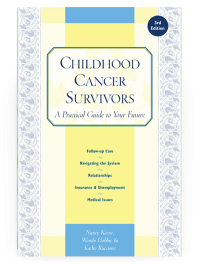Childhood Cancer Survivors
Chapter 4. Navigating the System
The best prescription is knowledge.
— C. Everett Koop, M.D.
EVEN IN the 21st century, a cancer history can still create challenges for survivors. Knowledge, networking, and advocacy are necessary to overcome barriers to obtaining an appropriate education, insurance, and a job.
It helps to have a map for the cancer survivorship journey. This chapter offers basic information to help guide you on your journey. It covers education from elementary school through vocational training or college. It outlines your legal rights and gives specific suggestions about how to understand and use the system to get the most appropriate education for yourself (or your child). It then discusses how to obtain comprehensive and affordable life and health insurance; how to obtain free or low-cost medications; how to handle job interviews and strategies for avoiding discrimination; and ways to enter the armed services. Finally, individual and group advocacy are discussed.
Table of Contents
All Guides- 1. Survivorship
- 2. Emotions
- 3. Relationships
- 4. Navigating the System
- 5. Staying Healthy
- 6. Diseases
- 7. Fatigue
- 8. Brain and Nerves
- 9. Hormone-Producing Glands
- 10. Eyes and Ears
- 11. Head and Neck
- 12. Heart and Blood Vessels
- 13. Lungs
- 14. Kidneys, Bladder, and Genitals
- 15. Liver, Stomach, and Intestines
- 16. Immune System
- 17. Muscles and Bones
- 18. Skin, Breasts, and Hair
- 19. Second Cancers
- 20. Homage
- Appendix A. Survivor Sketches
- Appendix B. Resources
- Appendix C. References
- Appendix D. About the Authors
- Appendix E. Childhood Cancer Guides (TM)

